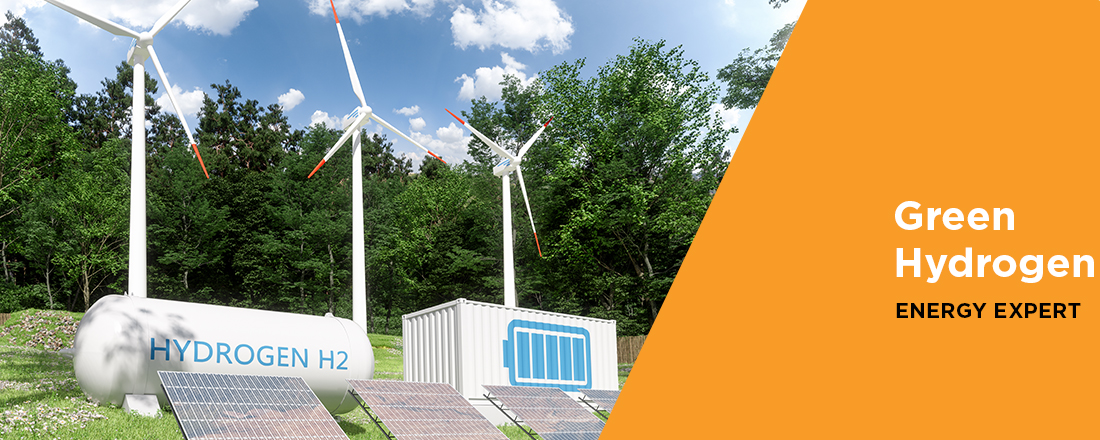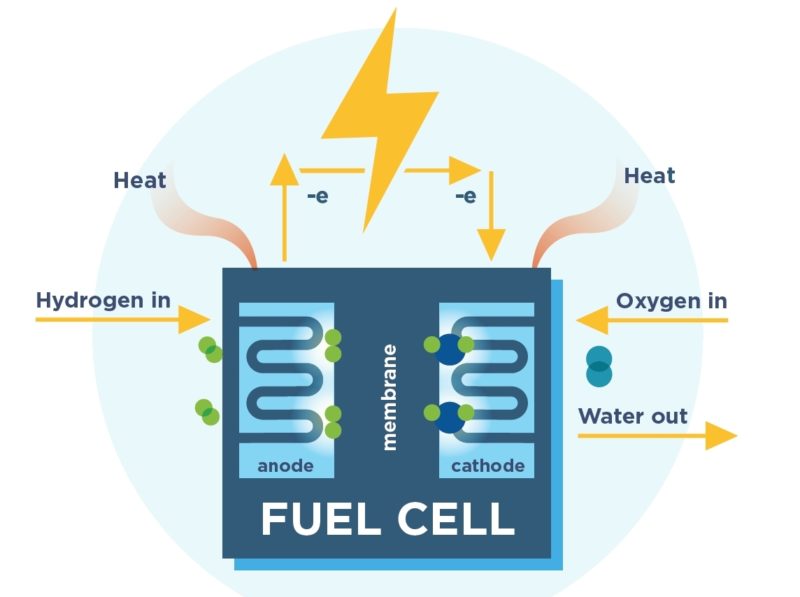MCE’s Energy Expert Series takes a deeper dive into more complex energy topics. Explore topics like this one, microgrids, and net energy metering in greater detail through our Energy Expert series. Looking for more basics? Check out our Energy 101 series.
What is hydrogen fuel?
Hydrogen fuel is a clean fuel that can be produced without greenhouse gas emissions and used in a variety of energy applications. It’s commonly used in hydrogen fuel cell vehicles as an alternative to electric vehicles. Like gasoline, hydrogen can be stored in a liquid form and pumped into a vehicle by using the same processes as a traditional gas station. It can also be used in heating and energy storage. Hydrogen fuel can be created through several processes, including thermal, electrolytic, solar-driven, and biological. When hydrogen fuel is consumed in a fuel cell, the only by-product is water, creating a completely clean source of energy.
Thermal Process
The thermal process creates 95% of hydrogen fuel used today. Hydrocarbon fuels, including natural gas, diesel, coal, biogas, and renewable liquid fuels, are reformed with steam, which reacts to create hydrogen.
Electrolysis uses electricity to split water molecules into hydrogen and oxygen. Unlike thermal processes, electrolysis can be powered entirely from renewable energy, creating a zero-carbon fuel also known as green hydrogen.
Solar-Driven Process
Solar-driven hydrogen fuel can be created in three ways: photosynthetic bacteria produce hydrogen, specialized semiconductors separate water into hydrogen and oxygen, or concentrated solar power drives water-splitting reactions.
Biological Processes
Biological processes use bacteria and algae to produce hydrogen through biological reactions. Certain microbes create hydrogen as a by-product of their metabolism. They do this through consumption of biomass or wastewater or the use of photosynthesis.
What is green hydrogen?
Green hydrogen is hydrogen fuel that is created through renewable energy technologies. Electrolysis powered by renewable energy splits water molecules into hydrogen and oxygen, capturing and storing the hydrogen for use as a fuel. Using renewable technologies like solar makes this process completely carbon-free. Green hydrogen is one of the newest tools being considered on the path toward a carbon-free future.
In California, green hydrogen is appealing due to the large amounts of solar overproduction in the middle of the day. This excess solar can be used for electrolysis to create and store green hydrogen. For more information on solar oversupply in California, read our Energy Expert: Duck Curve blog post. The good news is that green hydrogen helps solve the duck curve. This emerging energy storage technology has multiple applications to help us reach our greenhouse gas reduction targets while reducing strain on the electrical grid and increasing grid reliability.
Power-to-Power Applications
One way to use green hydrogen is in power-to-power applications. For these applications, power is used to create hydrogen and the hydrogen is then used to create long-duration, dispatchable power. One example of power-to-power green hydrogen is using excess solar power produced during the day to create green hydrogen fuel through electrolysis. This hydrogen can be stored and used as fuel to generate power via a gas turbine or a fuel cell during peak demand hours. In this case, hydrogen acts as a form of energy storage, shifting production from times when it isn’t needed to times when demand is high. Power-to-power applications increase grid reliability and decrease the need for natural gas peaker plants in the evening.
Power-to-Transportation Applications
Power-to-transportation applications allow green hydrogen to be generated from solar energy and then used as fuel in hydrogen fuel cell vehicles. These vehicles power up like a gas vehicle ¾ with liquid fuel in just a few minutes. The hydrogen fuel moves through a fuel cell, which splits the hydrogen into electrons which are used to power a motor. The only emissions from this process are water and heat.
While most of the hydrogen fuel produced today comes from processes that require the use of fossil fuels, green hydrogen provides a zero-emission alternative. Hydrogen fuel cell vehicles powered with green hydrogen would create a completely zero-emission vehicle powered by the sun.
How is MCE pursuing green hydrogen?
Power-to-power applications of green hydrogen are expensive and can require new infrastructure. The low efficiency of this process, high costs for equipment, and lack of public and grant funding for power-to-power green hydrogen applications make it an expensive pathway.
MCE is currently pursuing power-to-transportation applications, both due to the availability of financial incentives, and the fact that transportation accounts for the largest portion of greenhouse gases emitted in California. Government incentives and programs like the low carbon fuel standard (LCFS) credits make power-to-transportation applications the most financially feasible pathway for commercializing green hydrogen. As MCE pursues this option, we will also continue to explore financially feasible options for power-to-power solutions.







